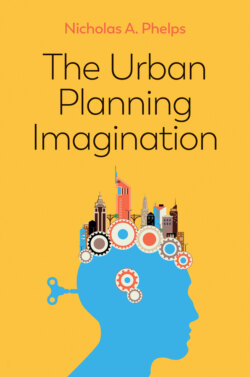Читать книгу The Urban Planning Imagination - Nicholas A. Phelps - Страница 19
Clubs
ОглавлениеAccess to the public realms we most associate with the city is uneven because most of these spaces generate an inclusion/exclusion problem, derived from some need to ration use or from the costs in time and money needed to access them (Webster, 2002: 398). New York is the setting for numerous private public spaces (Kayden, 2000) and the reality is that ‘most public realms serve particular publics and are better conceived of as club realms’ (Webster, 2002: 398).
There is a diversity of entities planning, producing and managing urban space that could be lumped together as ‘clubs’. They range from the worst forms of for-profit enterprises, to business-as-usual for-profit enterprises, to radical and socially and environmentally progressive communal experiments. There is nothing essential about these clubs in terms of the aesthetics or equity of their contributions to the built environment or the methods by which they seek to achieve their ends.
At their best, clubs present viable and innovative contributions to city building. Garden Cities and new towns across the world have been planned and delivered through corporations that provide urban services in the form of club goods. The Garden Cities of Letchworth and Welwyn in the UK were innovative and successful – developed in an orderly way over the business cycle, providing for schools, hospitals and parks without seceding from the rest of the urban system. Yet the same ideas have been part of the perpetuation of systemic inequalities conceived in apartheid South Africa (Skinner and Watson, 2018).
At its worst, club planning has detracted from cities and reveals ignoble motivations – of free-riding, cost cutting and reneging on promises. New master-planned communities developed by private for-profit corporations outside Jakarta in Indonesia, Johannesburg in South Africa, Santiago de Chile or Buenos Aires in Argentina might be efficient ways to deliver some urban services, but they are barely connected to the existing urban fabric or to one another by adequate road or rail infrastructure, and are sufficiently impermeable to be examples of the secession of socio-economically homogeneous segments of the population from their urban hosts.
Just as citizens can become empowered in clubs, so the ultimate measure of clubs as actors is whether they can find some of their better nature in a ‘club of clubs’ by which they can continue to make contributions to urban society.
